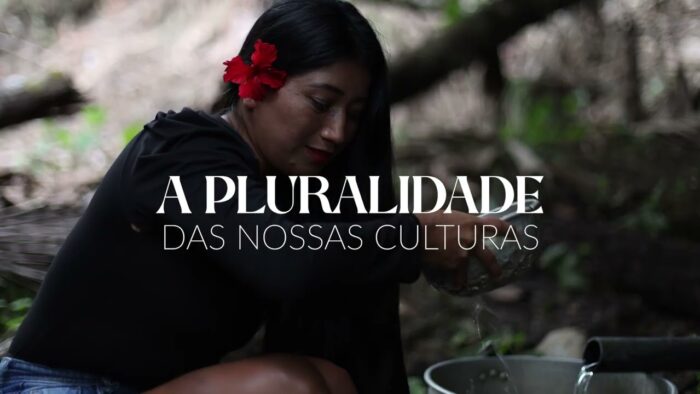Organization: UN Children’s Fund
Country: Peru
Closing date: 08 Apr 2017
UNICEF PERU
Position Title: COMMUNICATION FOR DEVELOPMENT OFFICER
Country: Peru
Job Level: NO-A (NATIONAL officer)
Position No. 100604
THIS POST IS OPEN FOR NATIONALS OF PERU ONLY
ORGANIZATIONAL CONTEXT
The fundamental mission of UNICEF is to promote the rights of every child, everywhere, in everything the organization does — in programs, in advocacy and in operations. The equity strategy, emphasizing the most disadvantaged and excluded children and families, translates this commitment to children’s rights into action. For UNICEF, equity means that all children have an opportunity to survive, develop and reach their full potential, without discrimination, bias or favoritism. To the degree that any child has an unequal chance in life — in its social, political, economic, civic and cultural dimensions — her or his rights are violated. There is growing evidence that investing in the health, education and protection of a society’s most disadvantaged citizens — addressing inequity — not only will give all children the opportunity to fulfill their potential but also will lead to sustained growth and stability of countries. This is why the focus on equity is so vital. It accelerates progress towards realizing the human rights of all children, which is the universal mandate of UNICEF, as outlined by the Convention on the Rights of the Child, while also supporting the equitable development of nations.
PURPOSE FOR THE JOB
The Communication for Development Officer will provide technical and operational support to the Social Policy Specialist who acts as Supervisor and to internal colleagues by administering, executing and implementing a variety of tasks to promote community engagement and participation, and measureable behavioral and social change/mobilization, requiring the application of technical and theoretical skills and the study of organizational goals, rules, regulations, policies and procedures.
The Communication for Development Officer will develop advocacy and technical assistance actions so that the various political sectors such as health, nutrition, social protection, social policy and education and levels implement actions of Communication for Development as part of managing the guarantee of the rights of children and adolescents.
KEY ACCOUNTABILITIES and DUTIES & TASKS
Support to strategy design and development of C4D activities
Research and/or participate in conducting comprehensive C4D situation analysis of social, cultural, economic, communication and political issues in the country/region. Collect and synthesize qualitative and quantitative information and data to support the establishment of comprehensive and evidence-based information for developing and planning the C4D component of the Country Program of Cooperation (and UNDAF).
Collect, draft and/or organize materials and related documentations for C4D strategies and plans (as a component of the CO and/or UNDAF Programs) to ensure optimum impact, scale and sustainability of achievements/results.
Assess and/or recommend appropriate information and materials for C4D initiatives verifying accuracy and quality for dissemination.
Assess the impact of C4D activities on the CO and UNICEF goals to achieve measureable behavioral and social change resulting in the improvement of children’s rights and wellbeing. Submit qualitative report/synthesis of results for development planning and improvement.
Support to the implementation of C4D activities
Collaborate with internal and external partners to provide operational and technical support to the design of C4D strategies, and research, develop, test, produce and use quality C4D materials and/or organize events and activities to ensure maximum outreach and impact on behavioral and social change of target audience.
Provide technical, administrative and logistical support and background materials to carry out C4D activities and recommend operational strategies, approaches, plans, methods and procedures to ensure optimum outreach and impact to target audience.
Assess and recommend potential contacts, networks, resources and multiple/social/digital media and tools to support maximum impact and outreach of C4D initiatives.
Follow up on the production of C4D materials to ensure technical quality, consistency and relevancy of communications materials that are developed, produced and disseminated to target audience (e.g. individuals, communities, government officials, partners, media, etc.)
Collect, assess and organize information for budget planning and management of program funds and prepare documentations and related materials for financial plan for C4D initiatives. Monitor/track the use of resources as planned and verify compliance with organizational guidelines, rules and regulations and standards of ethics and transparency.
Advocacy, networking and partnership building
Build and maintain partnerships through networking and proactive collaboration with national and international civil society organizations, community groups, leaders and other critical partners in the community and civil society to reinforce cooperation through engagement, empowerment and self-determination and to pursue opportunities for greater advocacy to promote UNICEF mission and goals for child rights, social equity and inclusiveness.
Collaborate with internal global/regional communication partners to harmonize, link and/or coordinate messaging to enhance C4D outreach and contribution to programmatic outcomes.
Innovation, knowledge management and capacity building
Institutionalize/share best practices and knowledge learned/products with global/local partners and stakeholders to build capacity of practitioners/users, and disseminate lessons learned to key audiences including donors and partners.
Support the organization, administration and implementation of capacity building initiatives to enhance the competencies of clients/stakeholders/partners across programme sectors in C4D planning, implementation and evaluation in support of programs/projects. Develop training materials for training activities, and revise them periodically for improvements and updates.
QUALIFICATIONS
Education : University Degree in Social and behavioral science, sociology, anthropology, psychology, education, communication, public relations or other related social science field.
Work Experience: One year of relevant professional work experience in areas of social development program planning, communication and public advocacy promoting community engagement, as well as participation and measureable behavioral and social change/mobilization is an asset.
Language: Fluency in Spanish and English is required. Knowledge of a local language is an asset.
APPLICATIONS
This is a National Officer post in Peru, opened only to candidates with Peruvian nationality.
If you are a National of Peru and your competencies match the requirements of the post, apply to:
https://www.unicef.org/about/employ/?job=503712
Last date for receiving applications is 7 April 2017
Unicef is committed to diversity and inclusion within its workforce, and encourages qualified female and male candidates from all religious and ethnic backgrounds (particularly indigenous people), as well as persons living with disabilities, to apply to become a part of our organization.
How to apply:
UNICEF is committed to diversity and inclusion within its workforce, and encourages qualified female and male candidates from all national, religious and ethnic backgrounds, including persons living with disabilities, to apply to become a part of our organization. To apply, click on the following link http://www.unicef.org/about/employ/?job=503712


